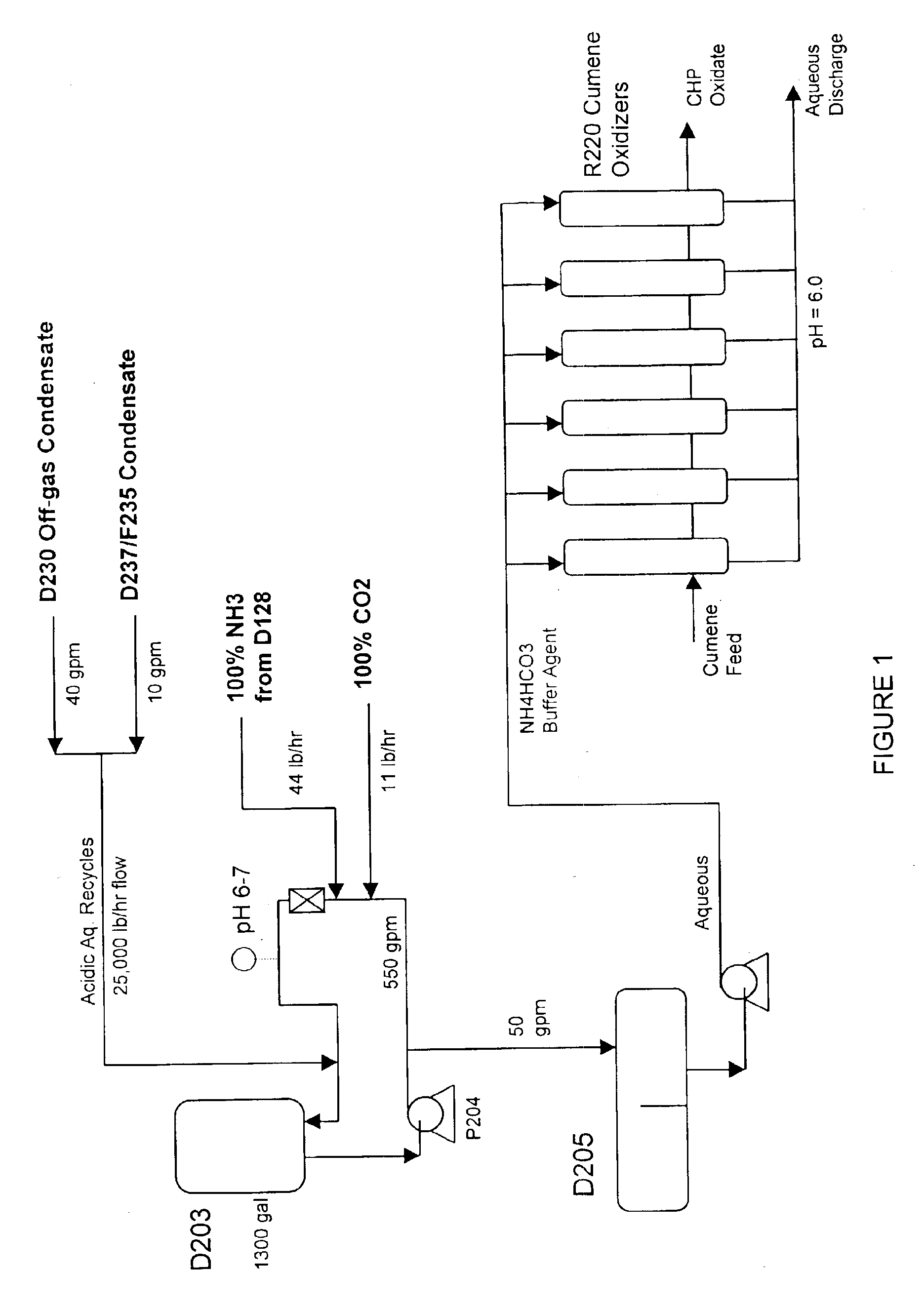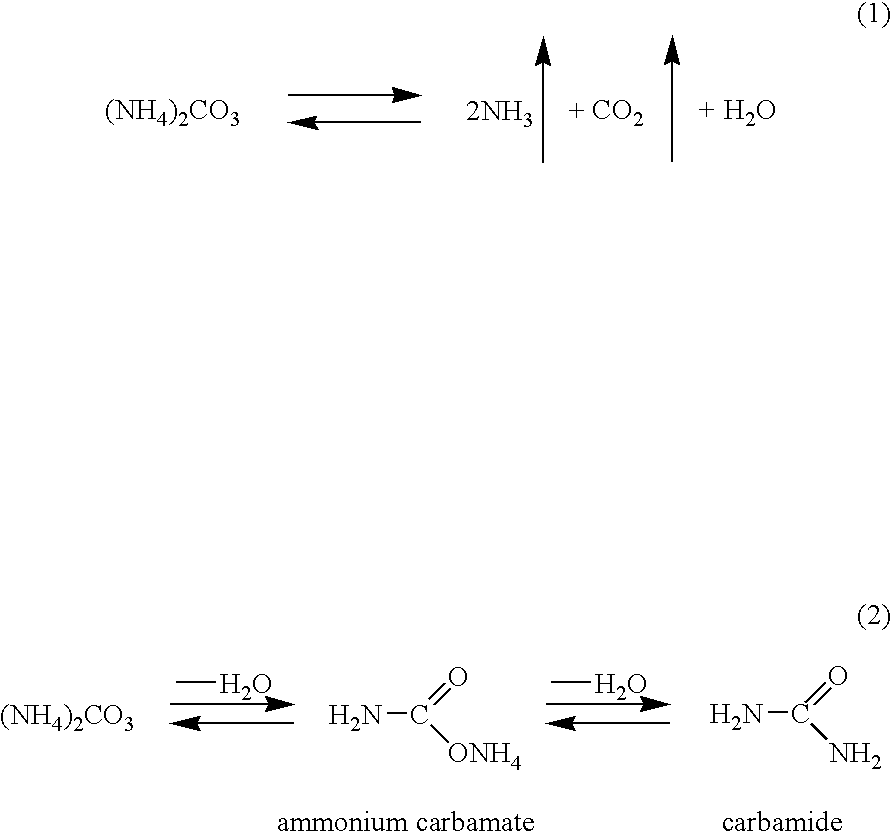Method of producing cumene hydroperoxide
a technology of cumene hydroperoxide and cumene, which is applied in the field of cumene hydroperoxide production, can solve the problems of acid-catalytic decomposition, slow oxidation process rate, and economically inefficient use of ammonium salts such relatively expensive organic acids, and achieves the effect of maintaining the high selectivity and rate of cumene oxidation and reducing the environmental characteristics of the process
- Summary
- Abstract
- Description
- Claims
- Application Information
AI Technical Summary
Benefits of technology
Problems solved by technology
Method used
Image
Examples
examples 1-6
[0044]The basic experiment parameters (a pressure of 5 atm and a temperature of 80-120° C.) simulate the working conditions of the individual reactors of an actual industrial plant. The feedstock flow rate was selected in such a manner that the CHP concentration gain corresponded to a six-reactor system.
[0045]In the experiments, cumene of a purity of no less than 99.85% was used. The aqueous phase was prepared from ammonium bicarbonate of the “chemically pure” grade with an ammonia content of no less than 21.7%.
[0046]The oxidative feedstock for each of the experiments was either pure commercial cumene (first reactor, T=120° C.) or oxidation products obtained in the course of the previous experiments.
[0047]The concentration of CHP was determined by iodometric titration.
[0048]The concentrations of ACP and DMPC were determined by gas-liquid chromatography: a chromatograph with a flame ionization detector and a 25 m long column with an outer diameter of 0.32 mm; stationary liquid phase:...
example 7
[0055]The process is conducted similarly to examples 1-6 but, in oxidation, an aqueous solution of an ammonium salt obtained by passing carbon dioxide gas through an aqueous solution of ammonia is used. At an oxidation temperature of 120° C. and a pressure of 5 atm, the conversion is 5.3% and the selectivity was 85.7%.
PUM
| Property | Measurement | Unit |
|---|---|---|
| pressure | aaaaa | aaaaa |
| temperature | aaaaa | aaaaa |
| temperature | aaaaa | aaaaa |
Abstract
Description
Claims
Application Information
 Login to View More
Login to View More - R&D
- Intellectual Property
- Life Sciences
- Materials
- Tech Scout
- Unparalleled Data Quality
- Higher Quality Content
- 60% Fewer Hallucinations
Browse by: Latest US Patents, China's latest patents, Technical Efficacy Thesaurus, Application Domain, Technology Topic, Popular Technical Reports.
© 2025 PatSnap. All rights reserved.Legal|Privacy policy|Modern Slavery Act Transparency Statement|Sitemap|About US| Contact US: help@patsnap.com



